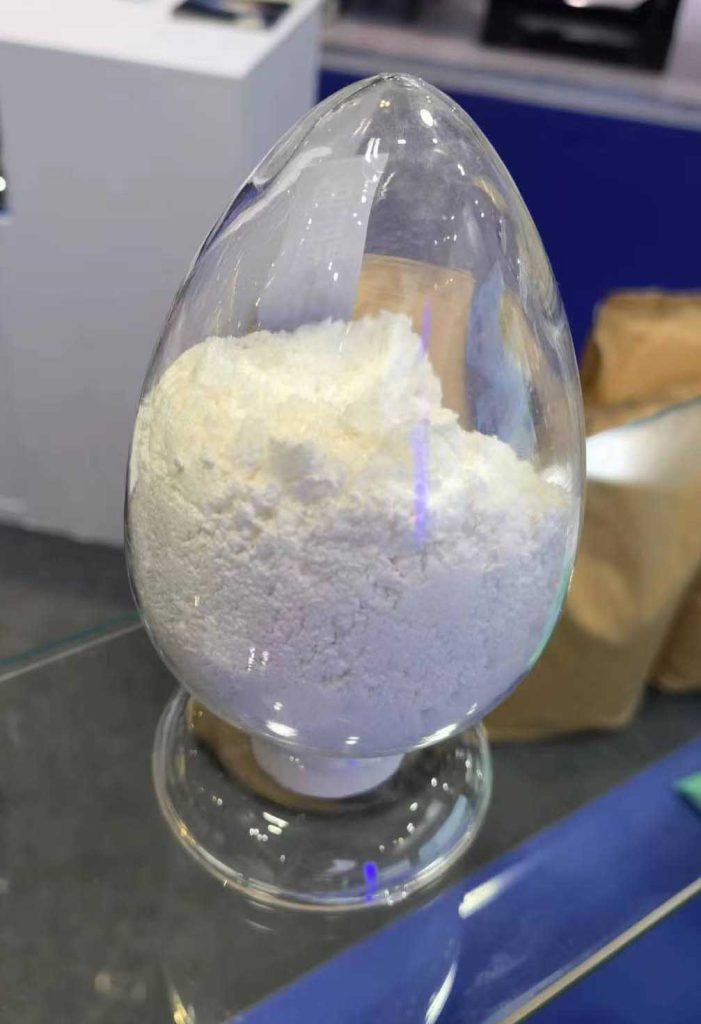Oil Additive with ZDDP
What Does Zinc Have to Do with Motor Oil?
When discussing motor oil, the term “Zinc” often refers to a vital compound known as Zinc Dialkyl Dithiophosphates or ZDDP. This particular oil additive with ZDDP plays a crucial role in engine lubrication, aimed at preventing metal-to-metal contact between various engine components. The primary mechanism behind ZDDP lies in its ability to create a protective film on engine parts, ensuring smooth operation and enhanced longevity.
ZDDP oil additives act as a robust defense system within the engine, particularly in high-pressure areas where metal surfaces come into close contact during the combustion process. As these surfaces rub against each other, friction and wear can occur, leading to potential damage and decreased performance over time. However, with the presence of ZDDP, the formation of a protective film acts as a barrier, reducing friction and minimizing wear on critical engine parts.
One of the key advantages of using ZDDP oil additives is their contribution to the prevention of premature engine failure. By reducing friction and wear, ZDDP ensures that the engine can maintain its optimal performance levels for an extended period. This benefit is especially crucial for those with high-performance engines or classic cars, as they often experience higher stress levels during operation.
Moreover, ZDDP oil additives are well-known for their impact on engine cleanliness. The formation of a protective film also helps to keep harmful deposits, such as sludge and varnish, at bay. These deposits can accumulate over time and hinder engine performance, leading to decreased fuel efficiency and power output. With ZDDP oil additives actively preventing their formation, the engine can maintain its cleanliness and efficiency, thus ensuring a smoother, more responsive drive.
It is essential to note that while Oil Additive with ZDDP is an effective and valuable component in motor oil, its usage has evolved due to advancements in engine technology and environmental concerns. In the past, Oil Additive with ZDDP levels were substantially higher in motor oil formulations. However, as catalytic converters became widespread in modern vehicles, it was discovered that excessive ZDDP levels could negatively impact the converter’s functionality.
Oil Additives | Oil Additive with ZDDP
Oil additives play a critical role in optimizing the performance and protection of engines by improving the lubricant’s overall effectiveness. These chemical compounds are carefully formulated to enhance the properties of the base oil, also known as oil “base stock.” Regardless of the type of base oil used, manufacturers have the flexibility to select specific additives tailored to meet the unique requirements of each application. One such essential is oil additive with ZDDP, which has gained prominence for its exceptional benefits in engine lubrication.
The incorporation of ZDDP in oil additives is of utmost importance, particularly in engines subjected to high-pressure and high-stress conditions. ZDDP functions as a formidable shield, preventing metal-to-metal contact between engine parts during the combustion process. This results in a protective film being formed on the surfaces of critical components, reducing friction and minimizing wear. As a result, engines experience reduced mechanical stress and prolonged life, ultimately contributing to enhanced overall performance.
Beyond its protective properties, oil additive with Oil Additive with ZDDP have proven to be instrumental in preserving engine cleanliness. Contaminants such as sludge and varnish can accumulate within the engine, leading to decreased fuel efficiency and compromised power output. By incorporating ZDDP in oil formulations, these harmful deposits are effectively deterred, ensuring a cleaner engine and optimizing its efficiency.
Oil Additive with ZDDP
How Do Zinc Additives Affect Old Engines?
For owners of vintage vehicles and classic cars, preserving the longevity and performance of their beloved engines is of paramount importance. Many older engines rely on flat tappet lifters, a component that requires special attention to prevent premature wear and damage. This is where the significance of oil additive with ZDDP comes into play, as they play a crucial role in safeguarding these engines from the adverse effects of metal-to-metal contact.
Zinc Dialkyl Dithiophosphates or oil additive with ZDDP have proven to be a game-changer for older engines equipped with flat tappet lifters. The ZDDP compound acts as a protective barrier between the lifter and camshaft, reducing friction and wear during engine operation. This protective film ensures that the lifter and camshaft surfaces do not experience excessive mechanical stress, thus preventing premature wear and extending the overall life of these vital engine components.
As ZDDP engine oil circulates through the engine, the presence of Oil Additive with ZDDP provides peace of mind to classic car enthusiasts. ZDDP oil additives create a protective layer that not only safeguards the flat tappet lifters and camshafts but also protects other critical engine parts from potential metal-to-metal contact. This comprehensive protection translates to enhanced engine durability and consistent performance, qualities that are highly sought after for vintage vehicles that hold significant sentimental and historical value.
Oil Additive with ZDDP
Declining Zinc Levels in Engine Oils
As engines continue to evolve, so do the challenges associated with maintaining optimal performance and environmental compliance. One significant development in engine oil with ZDDP additive formulations is the declining zinc levels, primarily due to the presence of Zinc Dialkyl Dithiophosphates (ZDDPs) as essential antiwear components. While ZDDPs have been a go-to solution for preventing metal-to-metal contact and reducing friction, their affinity for metals and the formation of glassy films at high temperatures has presented challenges for catalytic converters.
The unique properties of Oil Additive with ZDDP that make them effective antiwear agents have also posed a concern for catalytic converters, leading to a necessity for reducing ZDDP treat rates in engine oil with ZDDP additives. Specifically, the formation of zinc pyrophosphate during engine operation irreversibly deactivates catalyst metals found within catalytic converters. As a result, manufacturers have had to adjust their approach to formulating ZDDP engine oils, with European Automobile Manufacturers Association and American Petroleum Institute categories specifically imposing limits on phosphorous levels in oil formulations.
The limitation on phosphorous levels in engine oil with ZDDP additives is aimed at striking a balance between preserving engine performance and ensuring the proper functioning of catalytic converters. While ZDDPs remain indispensable for safeguarding engines from wear and enhancing their longevity, excessive zinc levels can jeopardize the effectiveness of catalytic converters in reducing harmful emissions.
Potential Downsides to Zinc Additives
While oil additives with Zinc Dialkyl Dithiophosphates (Oil Additive with ZDDP) have proven to be a boon for older cars, there are potential downsides to consider when it comes to their usage. Some may wonder why the automotive industry doesn’t stick with this formula and maintain consistent zinc levels. However, in-depth research has shed light on the unintended consequences of zinc additives, prompting the industry to reevaluate its approach.
One of the primary concerns associated with zinc additives is their potential to harm the engine. As motor oil with ZDDP additives circulates through the engine, a small amount may find its way into the engine’s combustion chamber. Within this chamber, the zinc present in the oil with ZDDP additives undergoes combustion, transforming into ash. This ash then travels through the exhaust pipe, becoming a byproduct of engine operation.
The accumulation of zinc ash within the exhaust system can lead to several issues. Over time, this ash can build up and restrict the flow of exhaust gases, negatively affecting engine performance and fuel efficiency. Additionally, excessive zinc ash in the exhaust system can impair the functionality of catalytic converters, which are critical components designed to reduce harmful emissions.
Oil Additive with ZDDP
So Why isn’t Zinc or ZDDP in Modern Motor Oil?
In the past few years, zinc and its product Zinc Dialkyl Dithiophosphates (ZDDP) have become less common, which may have caused a change in the way motor oil is made. The fact that zinc and phosphorous can hurt catalytic converters is a major reason why the oil business is changing the way it thinks about oil additives.
Catalytic converters are very important for lowering pollution because they change harmful gases into less dangerous ones. But zinc and phosphorous, which are both in Oil Additive with ZDDP, tend to get in the way of how the catalytic converter works. When zinc- and phosphorous-based motor oil is used, a small amount of zinc and phosphorous get into the engine’s combustion area. When they are burned, they turn into ash, which goes through the air system.
Over time, this buildup of ash can cause the exhaust system to get clogged and flow to slow down, which hurts engine performance and fuel economy. Also, if zinc and phosphorous are in the exhaust gases, they can damage the valuable metals in the catalytic converter, making it less effective at reducing emissions.
In answer to this worry, oil companies have taken steps to make motor oils with less zinc and phosphorous. Modern motor oils protect the engine and keep the catalytic converter working well by reducing the amount of zinc and phosphorous they contain.
Even though this change in how motor oil is made might make owners of older cars wonder, it’s important to remember that current engines have changed and now need different kinds of lubrication. Many new engines are made with roller lifters, which don’t need as much zinc and phosphorus as Oil Additive with ZDDP does.


